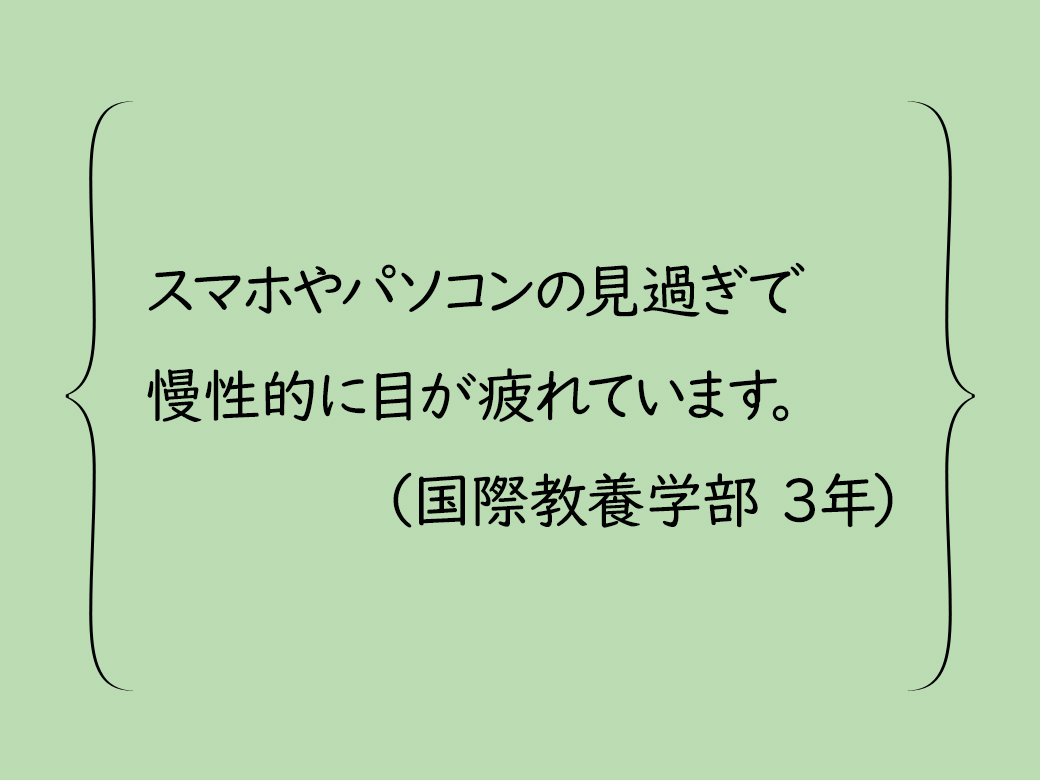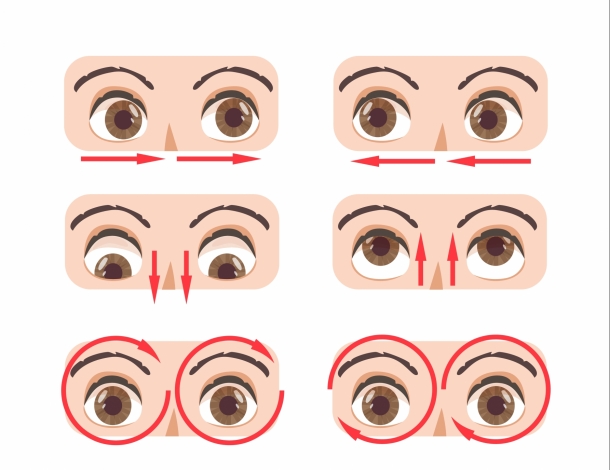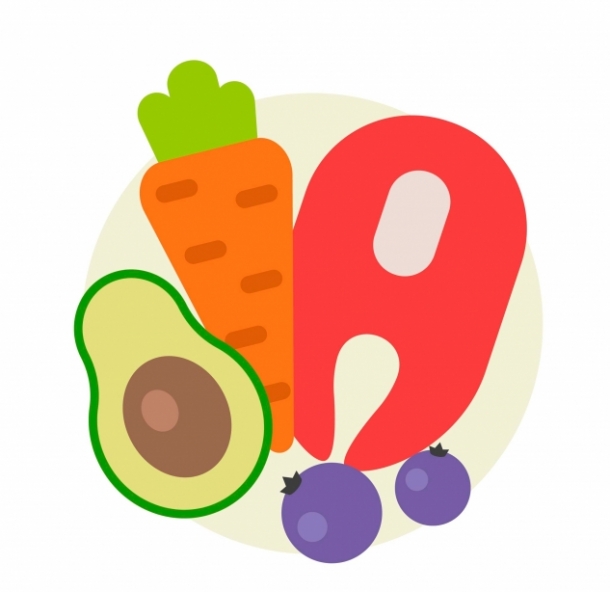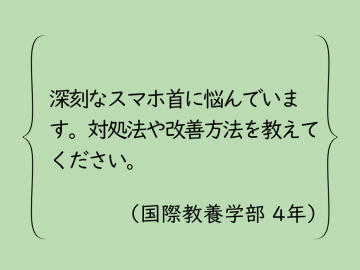
Health Support Center Nishi-Waseda Branch Public Health Nurse Nakamura
If fatigue is left untreated, it can cause headaches and stiff shoulders.
In today's world, where we often look at the screens of digital devices such as computers and smartphones, the increased strain on our eyes and muscle tension can cause symptoms such as tired eyes, blurred vision, dryness, and difficulty seeing. If this fatigue becomes chronic, you will always feel pain in your eyes, and there is a risk of eye strain that can lead to headaches and stiff shoulders, so try to get rid of it as soon as possible.

6 steps to relieve eye fatigue
1. Take a break
By resting your overworked eyes, you can relieve tension in your eye muscles. Take frequent breaks, especially when working on a computer for long periods of time, or when focusing on nearby objects, such as when viewing a smartphone.
2. Look far away
Make a conscious effort to look into the distance when you take a break, as it can loosen and relax tense muscles.
3. Warm or cool the eye area
When your eyes are tired, the blood flow to your eyes and surrounding muscles is also poor, so heating your eyes can widen blood vessels, relieve stiff muscles, and flush out accumulated fatigue substances. We recommend using a commercially available hot eye mask or a steamed towel wrung out with warm water.
However, if your eyes are bloodshot and painful, your capillaries are dilated, so cool them with a towel wrung out with cold water. Please be careful not to over-cool the skin, as over-cooling will worsen blood flow.
4. Do eye exercises
Eye exercises are effective in stimulating the eye muscles and relieving fatigue. Slowly rotate your eyeballs in a circular motion and repeatedly look up, down, left and right. Try not to move your face, just move your gaze. We also recommend blinking or closing your eyes tightly.

5. Massage the eye pressure points
There are many pressure points around the eyes. The pressure points are those that feel slightly painful when you press them with your fingers. Try pressing gently for 5 to 10 seconds and then relaxing for 5 seconds, being careful not to apply too much force with your fingers, about 3 times.
◆Seimei: This is the depression between the inner corner of the eye and the base of the nose. Close your eyes and pinch them from both sides with your index fingers and press inward.
◆Sanchiku: It is the hollow of the bone above the eye on the inside of the eyebrow. Close your eyes and use your thumbs to push upward from the bottom of your left and right eyebrows.
◆Taiyo: This is the slightly sunken area below the temple. Use your index or middle finger to loosen it by spinning it around as hard as you feel comfortable.

6. Eat foods that are good for your eyes
Blueberries are famous as a food that is good for the eyes, and they contain a lot of anthocyanin, which is said to have effects such as preventing retinal damage and improving blood flow. There are many other foods that contain nutrients that are good for eye strain, such as green and yellow vegetables, liver, and blue fish. Be aware of these things on a daily basis and try to eat a well-balanced diet.







![[Save version] Map of the four main campuses](https://www.waseda.jp/inst/weekly/assets/uploads/2025/09/17cb2975123fc5103172ef60bd98608d-610x458.jpg)

